Lucas Elliott
Retold
2009 | BFA Thesis Exhibition
Retold
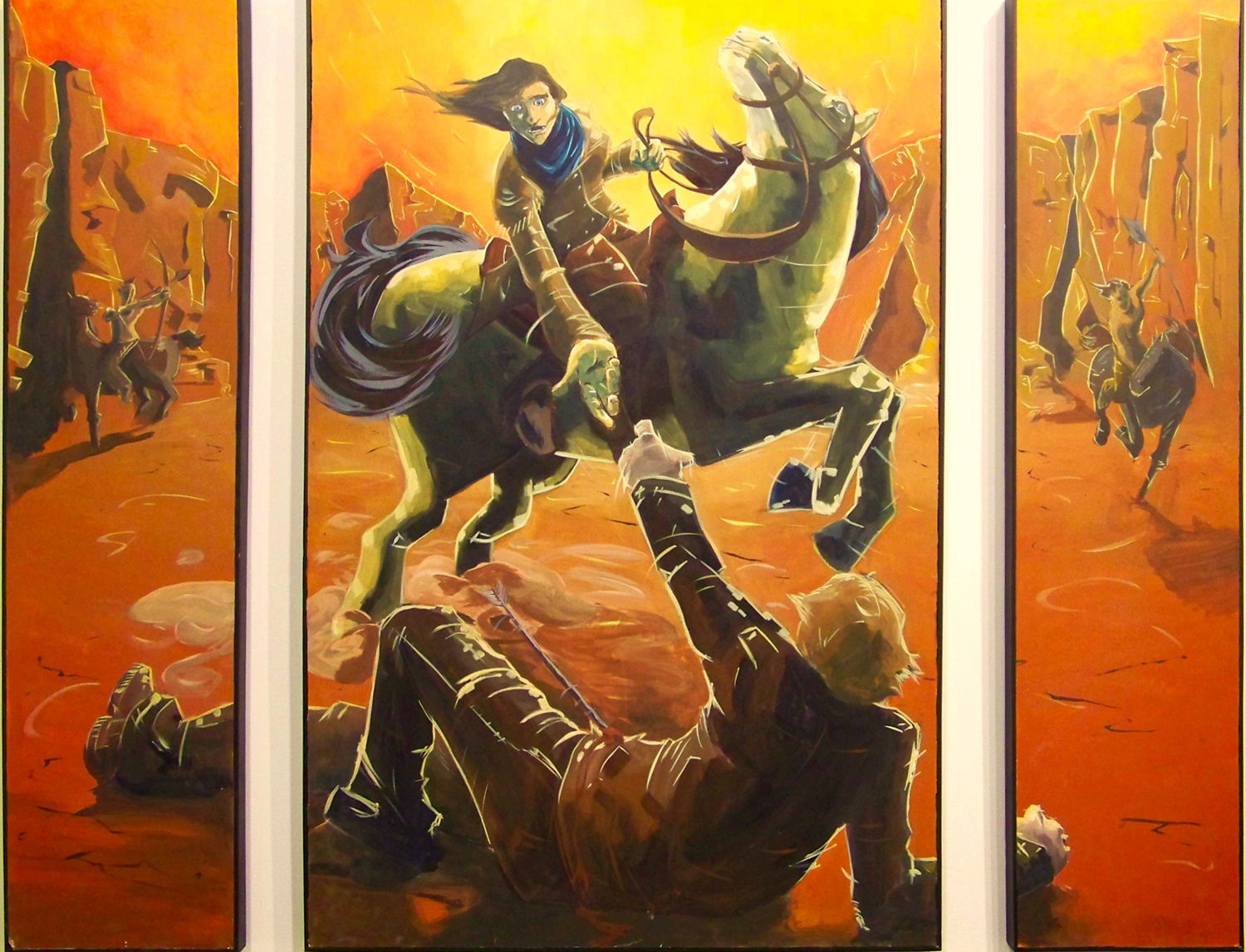
Calamity Jane
It the stories of history are told correctly, which most often isn't the case, then you would know that Martha "Calamity" Jane Cannary could outride, outshoot, out boast, out spit and out drink any soldier that the US army l put against her; and given the chance, she would tell you so herself. As the only woman in uniform, Jane rode out across the Wyoming plains with her battalion, and as they rode by they kicked up a cloud of dust that would block out the sun. While out on one of their rides a group of renegade Indians attacked Jane's battalion. In the midst of the fight her captain's horse was shot out from beneath him. Having heard her captain cry out Jane turned in her saddle, rode back, and took him up upon her horse riding him to safety. After surviving that moment of calamity, Jane's captain gave her her nickname and dubbed her the "Heroine of the Plains."
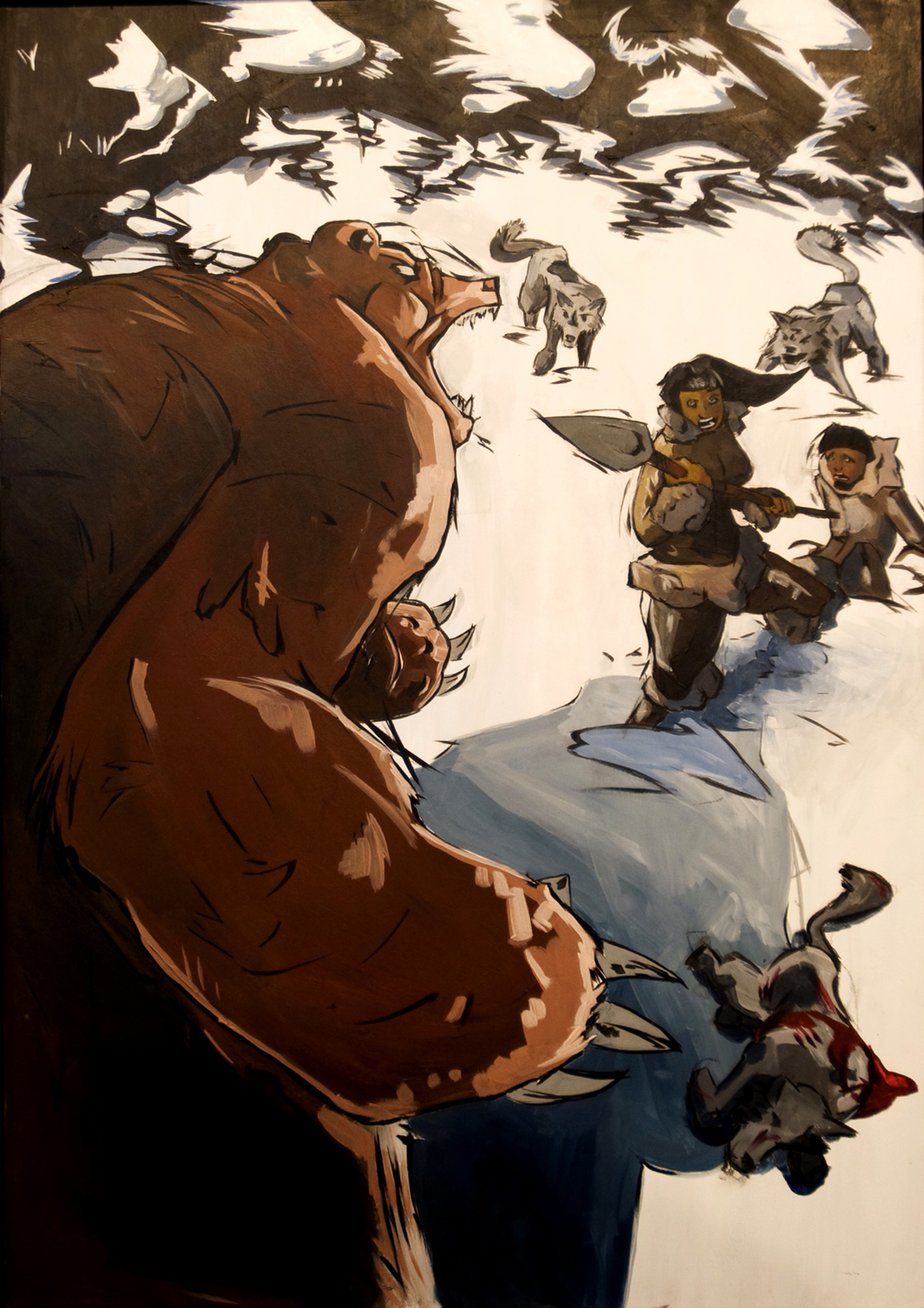
Otoonah
Life in the Arctic has never been known for its kindness. Yet who knows better of the gifts given and taken by the North, than those who have endured its joys and sorrows; those like Otoonah. As a young woman, abandoned by her Suqpiaq family, Otoonah received an ulu knife as a gift from an Arctic dream spirit. With the help of her knife Otoonah fashioned many weapons, and built herself to be the greatest hunter her people had ever seen. Many men wanted such a hunter for a wife, but she would have none but Apotasok. Though Apotasok wanted no hunter-wife, for a woman's place was in the home. Later, on the hunt, Apotasok found himself face to face with a large bear. Otoonah saw her love in distress and cut her dogs free from her sled. Her dogs distracted the bear long enough to give her a clear shot at its heart. And as Otoonah saved his life, Apotasok realized the worth of such a woman.
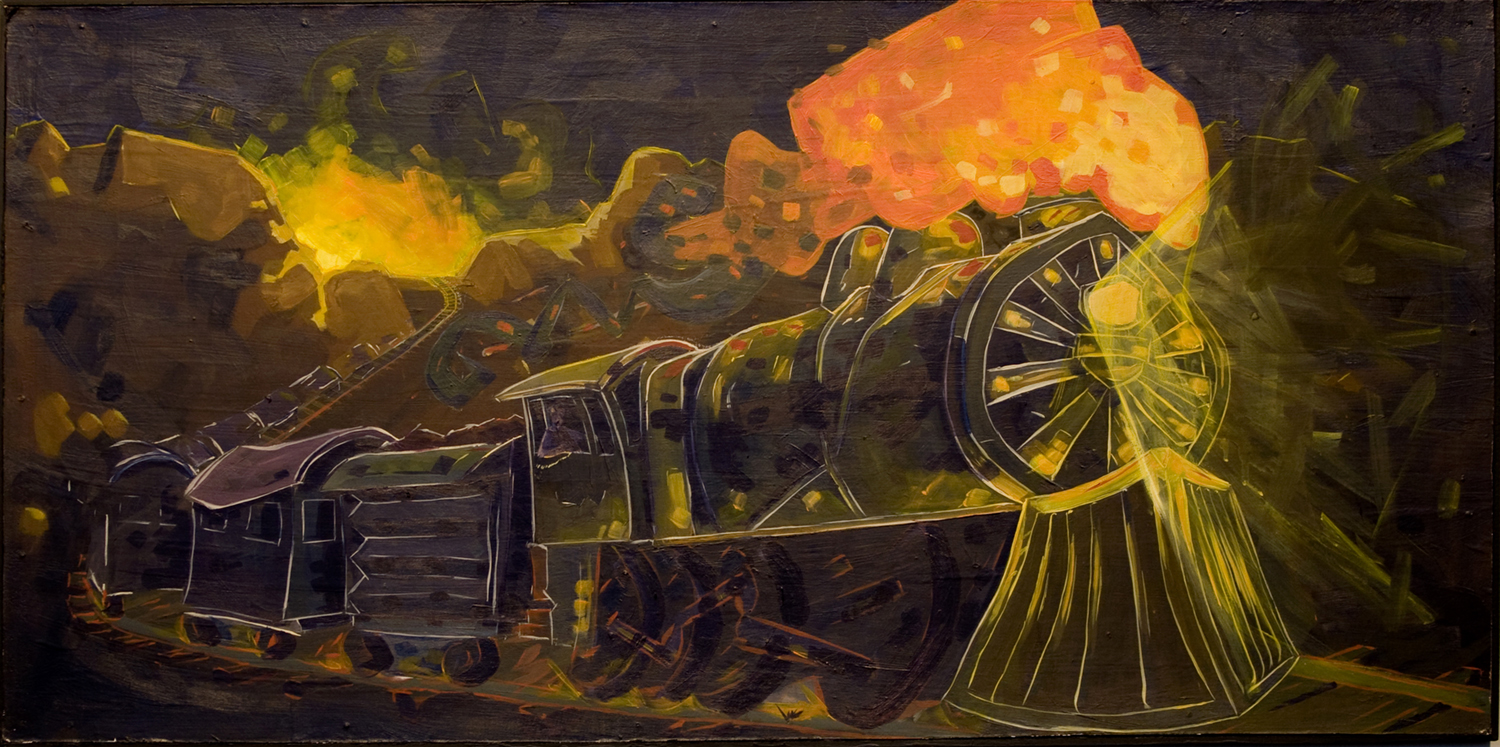
Casey Jones
Not so long ago, in a world powered by horses and steam, there was a train, engine #382, and that train was never late; of that Casey Jones made sure. Yet on an April night, in I 900, Casey pulled into the station, on time as usual, blowing the trains whistle louder than a banshee. But the next engineer pulling the "Cannonball Special" (express shift) was unable to work, so Casey volunteered to take over. The train had now been delayed by one and a half hours, so Jones was determined to make up the lost time. He was almost back on schedule when he rounded a corner only to find a freight train stalled on the tracks. As he slammed on the breaks his train derailed, and in the horrific crash that followed Casey Jones was the only casualty; having died with one hand on the brake and the other on the whistle cord.
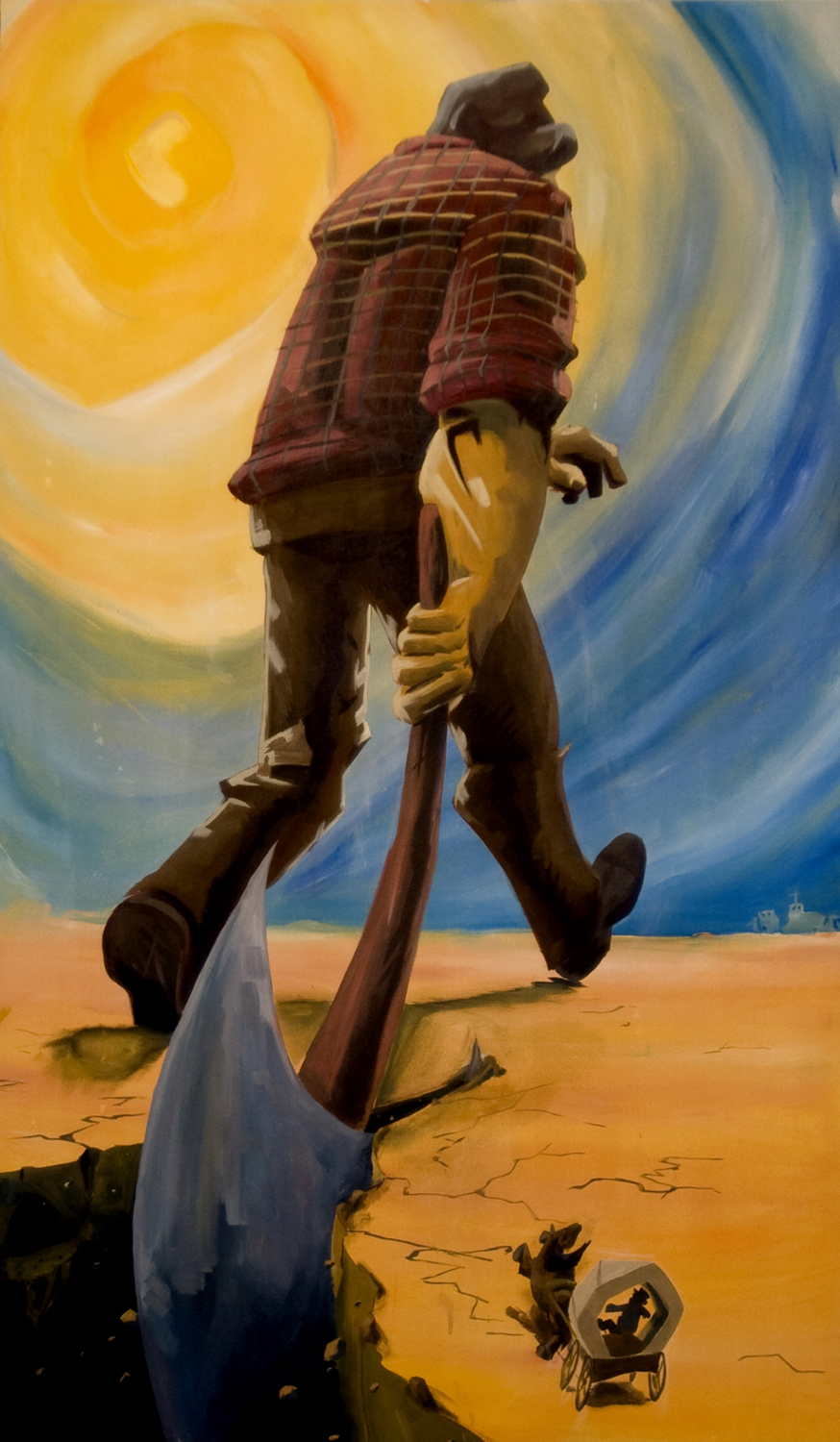
Paul Bunyan
Sometime between the years 1870 and 1900 in the state of Maine, an extraordinary baby was born. This child was odd in size, weighing more than 100 pounds, and strange in appearance, having been born with not only hair on his head but a beard on his chin. Such a large child needed a strong name, and so he was called Paul Bunyan. Paul grew up sheltered by the forests of Maine, where he built his reputation as a lumberjack. Yet there were only so many trees to be cut; so he traveled all over America in search of work. While passing though Arizona, on his way to the Pacific Northwest, exhausted, Paul let his ax fall from his shoulder and drag across the desert floor creating the Grand Canyon.
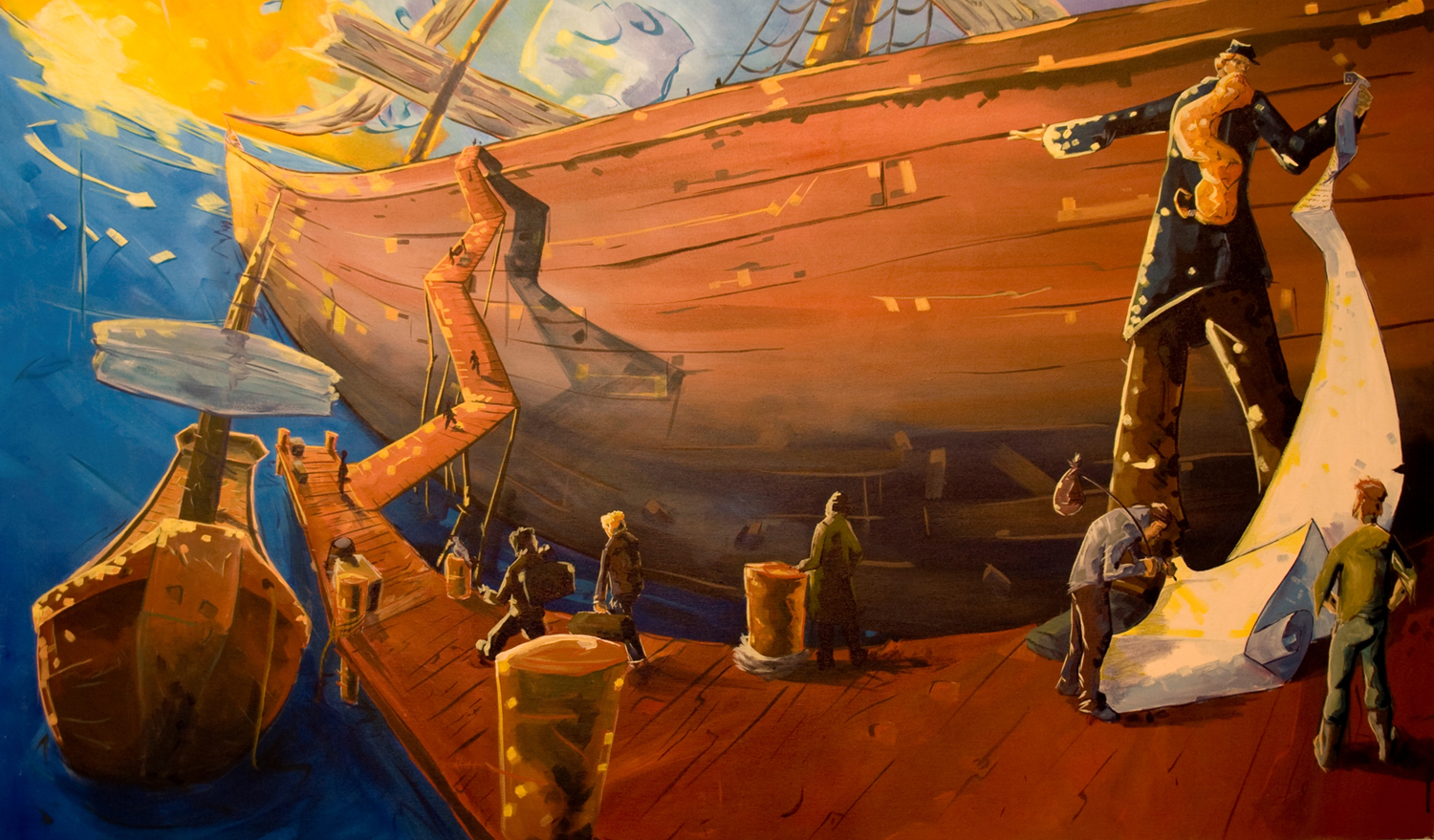
Captain Stormalong
In the early 1800s a tidal wave crashed oft the coast of Massachusetts depositing a baby, three fathoms long, onto the beach. The villagers who found and raised the child named him Alfred Bulltop Stormalong. At the age of twelve he had reached a height of six fathoms. Now, too large for the village where he was raised, Stormalong sought work aboard the trading ships that sailed daily out of the New England harbors. When Stormalong reached full adulthood even the biggest boat was still too small tor him. Therefore the New England sailors began to build a boat so large that it caused a lumber shortage all over America and took forty seamen to steer the ship. By the 1 840s hundreds of men sought adventure by signing up to sail out of Cape Cod aboard The Courser, with Captain Stormalong at the wheel.
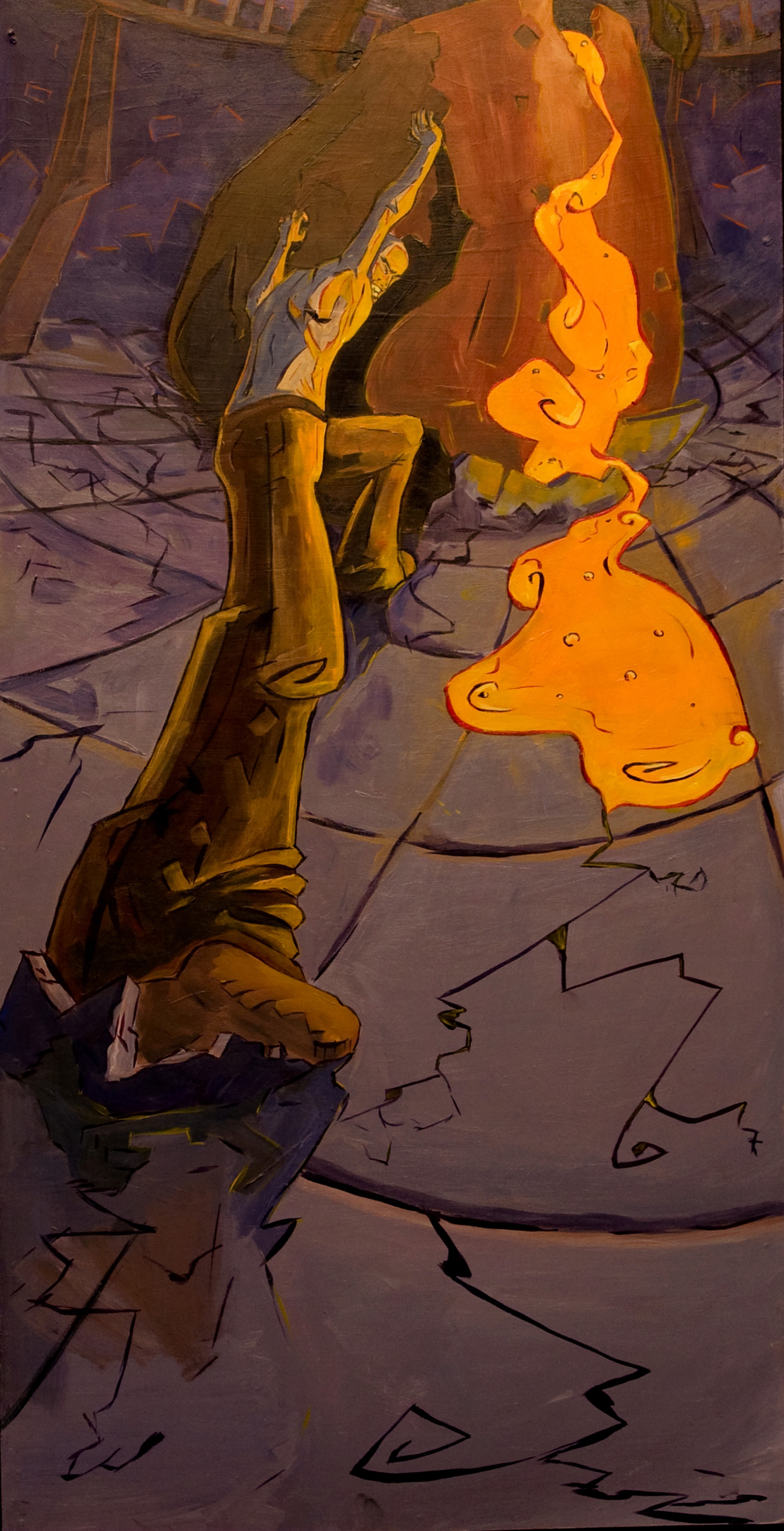
Joe Magarac
Born from the depths of a hematite mine and raised in a sweltering furnace, Joe Magarac became the greatest steel worker of the 1930s. This 7 toot tall man of steel could do the work of 29 ordinary men, stir the vats of hot steel with his bare hands, and fashioned railroad rails by squeezing molten metal though his clenched fist. Joe became a sort of patron saint to the steelworkers of Pennsylvania as he would appear seemingly out of nowhere during a moment of need. Of the many deeds he is known for one the most famous takes place in a factory where a crane was holding up a 50 ton crucible. When the crane broke and the crucible was falling, threatening to destroy the whole factory, Joe Magarac managed to use his brute strength in order to keep the crucible upright.
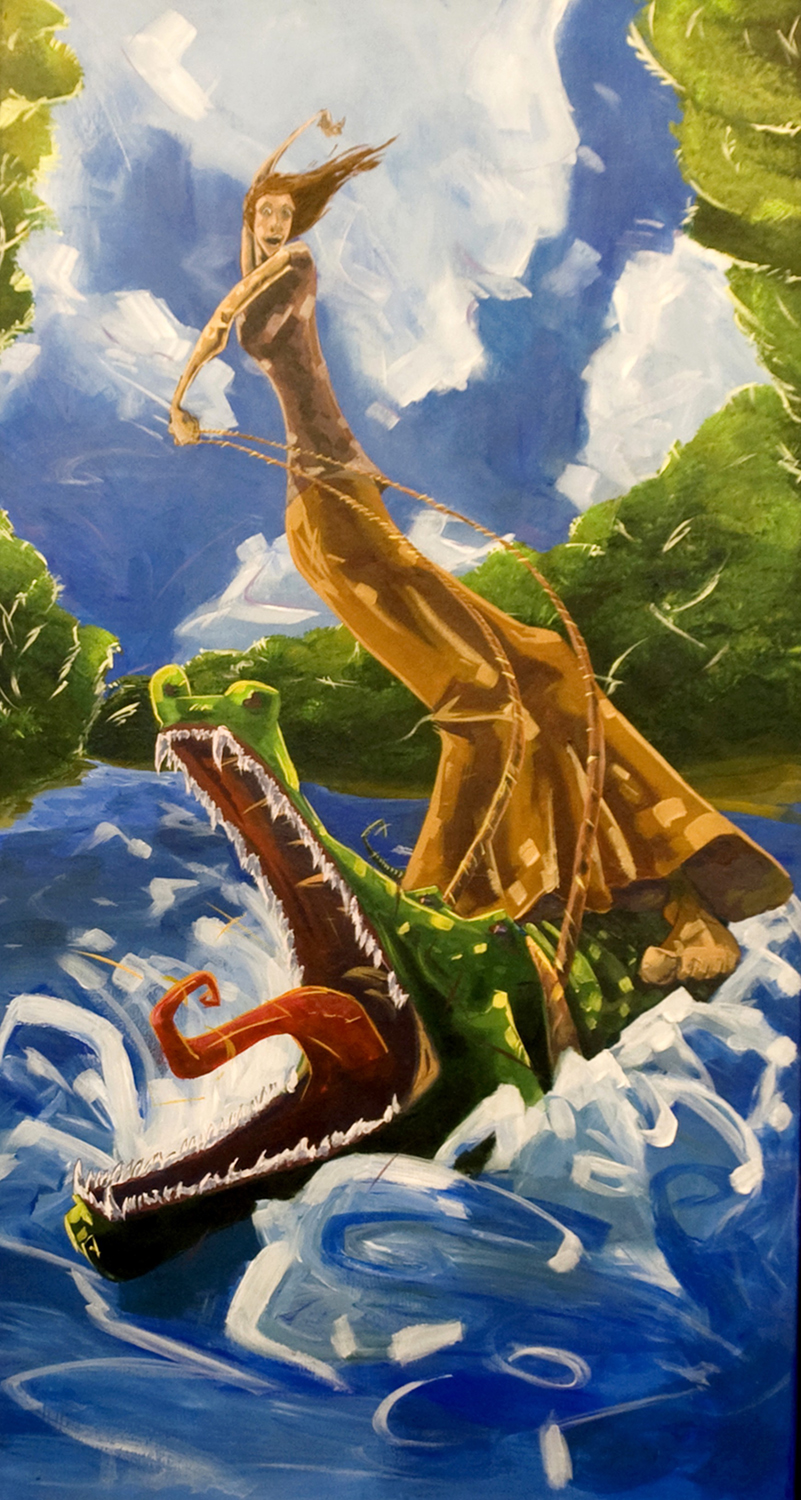
Sal Fink
From 1815-1830 there was no rougher or tougher gal on the mighty Mississippi than Sal Fink; daughter of the "King of the Keelboaters," Mike Fink. People called her the Mississippi Screamer for when she was in the mood she would let out such as noise that even the most enraged animal would stop in its tracks. Her scream was first heard the night she was born. At that time it was only loud enough to shake the roofs of the houses 3 miles down the river. As Sal grew so did her voice. By the time she was 17 Sal's scream "Hiiooweewhoo!" could be heard from Minneapolis to New Orleans. So "she rode the Mississippi on an alligator's back, with her skirt hitched high and a down and dirty laugh ... little Sal Fink goes a-hollering tunes, never bet that you can beat her at the hollering blues."
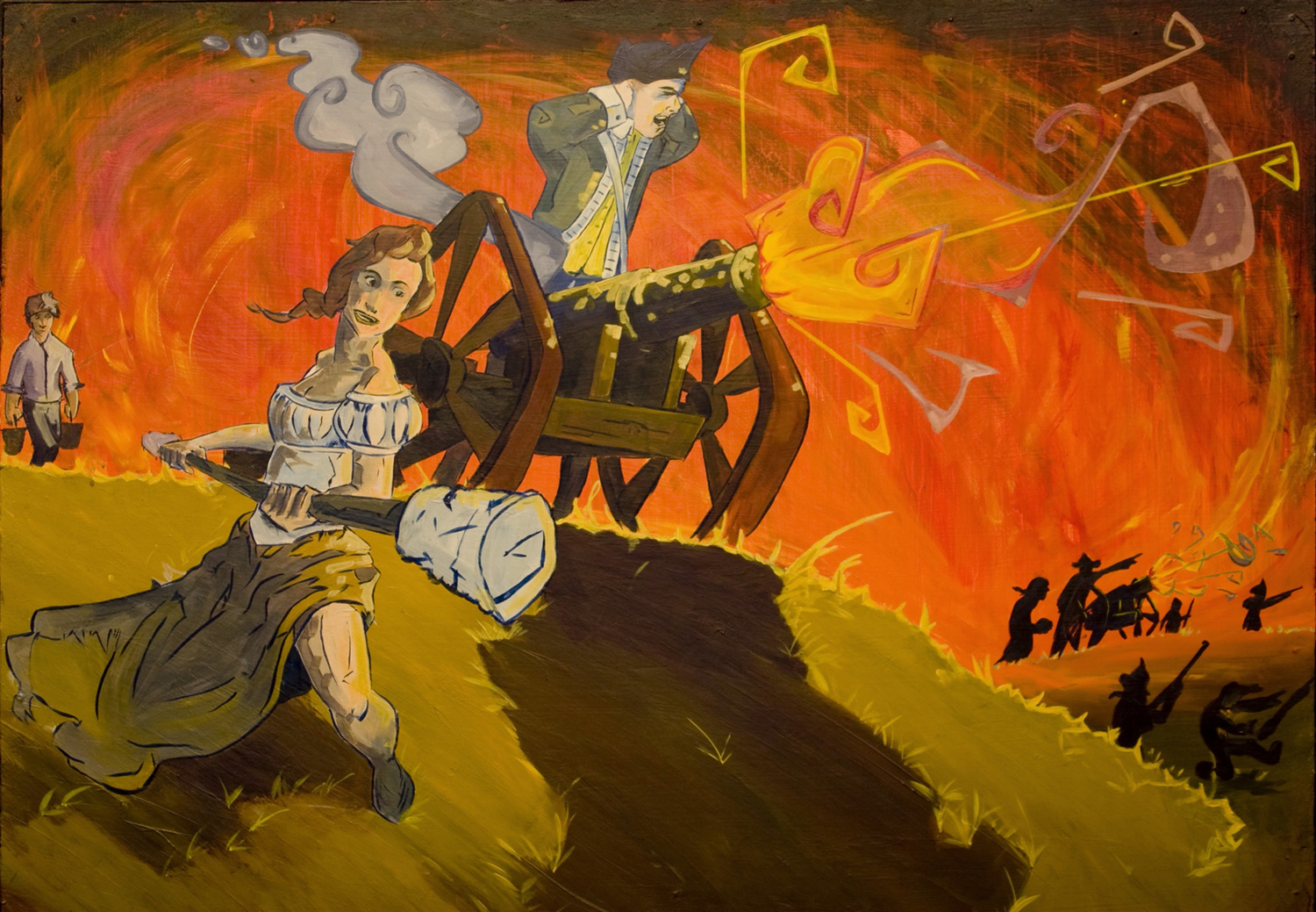
Molly Pitcher
While cannons fired and bullets flew across the battle fields of Monmouth, June 28, 1778, a stripped skirt fluttered in the wind as Mary Hays McCauly hauled water from her nearby well to the worn soldiers. Anxious for a drink the men, including her husband William Hays, would shout, "Molly! Pitcher!" as they saw her dart from person to person. As the gunfire grew louder, and men's blood began cover the grass, Molly was seen hauling away a crippled soldier; his body slung over her back. Upon her return her eyes met with her husband's just moments before he was wounded, unable to continue his post as an artilleryman. With William injured there were not enough men to man the gun. Without hesitation Molly stepped forward, took up the rammer staff, and with unbreakable resolution she held her husband's post.
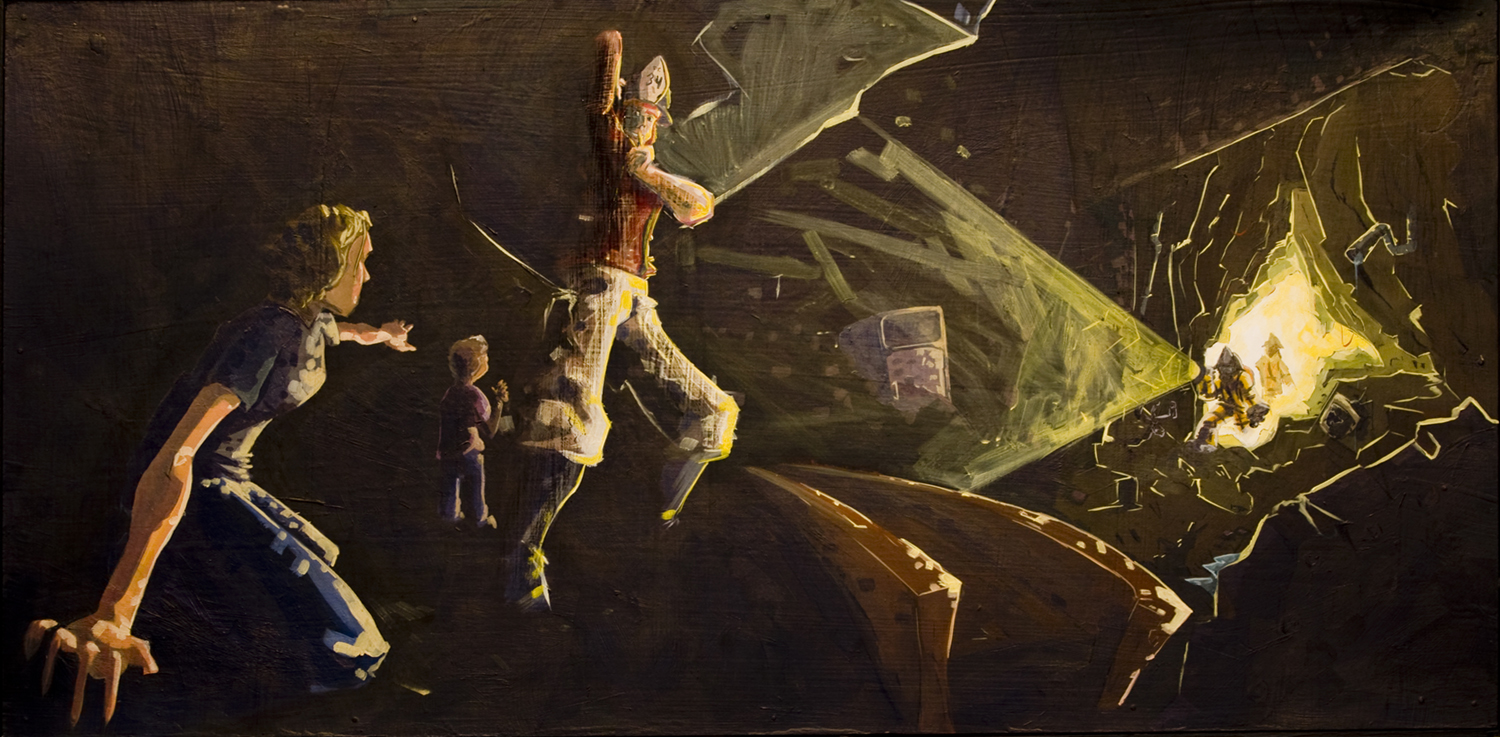
Mose
The Lady Washington was a giant old fire machine, and, although she was little more than a tank of water with a pump, she served the New York firefighters just fine. However, her ease of transportation could be credited to none other than fire Chief Mose Humphrey. Every New Yorker in the early 1800s knew the Chief, for he was unmistakable. He was 8 feet tall with hair the color of the flames he fought against. As news of a fire reached the station Mose and the boys would grab the Lady Washington and haul her to the burning building. If anything got in their way during this laborious process the Chief was quick to handle the situation; he once lifted a whole trolley of people, into the air just to let the pump through. Then one day, after the firemen were called to duty, they arrived on scene to see a new fangled fire machine already working at extinguishing the flames. In that moment Mose felt useless, and soon there afterword he disappeared. To where, no one knows... but there are those to say he appears like a spirit, out of nowhere, aiding the people in need when the new machines are of no use. So in a way he is always watching over his city. Mose, "The Spirit of New York."
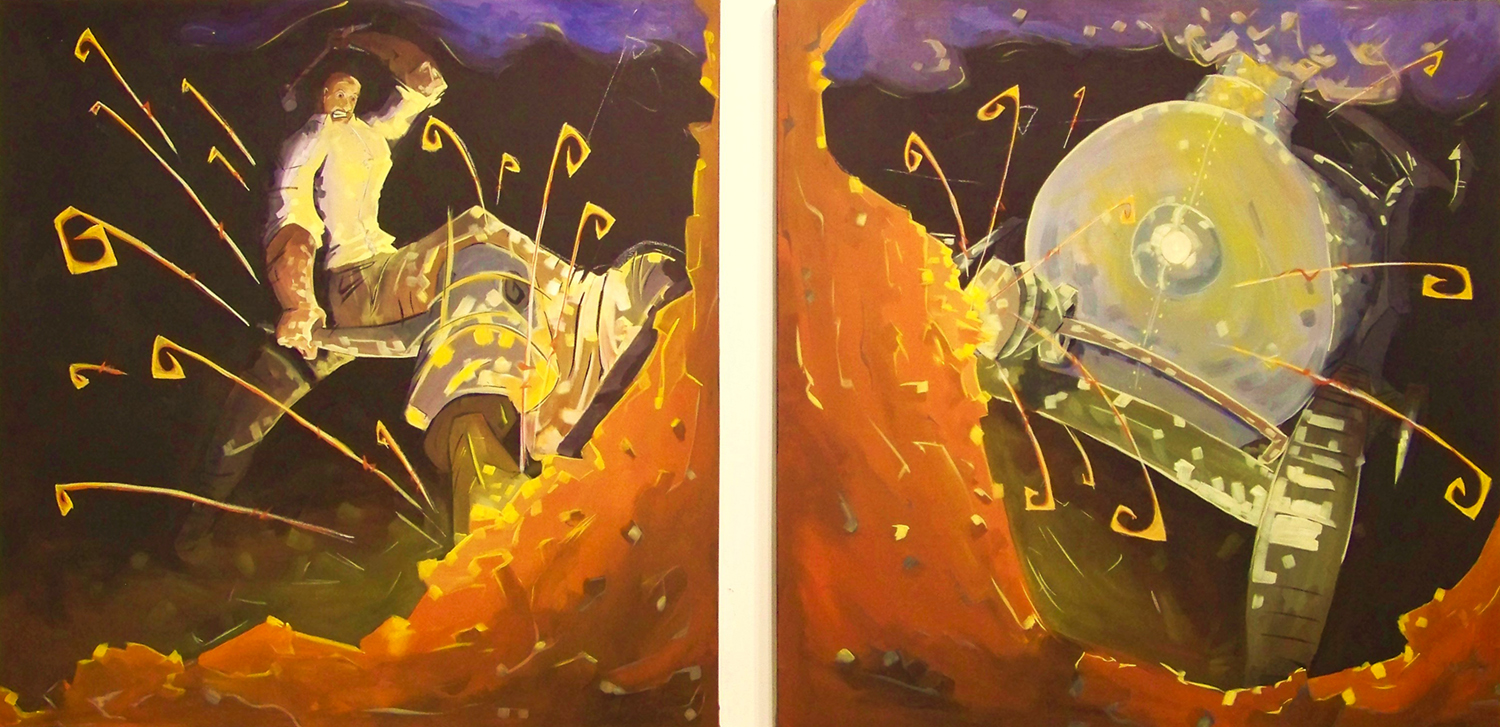
John Henry
After the Civil War, many Americans sought a new life in the West. As the population moved away from New England, railroad companies began to lay train tracks following the pioneers. Men, known as steel-drivers, were hired to hammer steel spikes into the rock creating holes for dynamite. In the 1870s there was no steel-driver more sought after than John Henry. It was said that John was born with a hammer in each hand; destined for the job he was best at. He could hammer for hours on end without missing a beat, and so fast that he had to keep a pail of water nearby to cool his hammer (lest it tum to molten metal). Yet technology brought forth the steam-powered hammer, supposedly capable of driving steel faster than any man. In an effort to save his job John Henry challenged the steam hammer to a race and won. Alas, thoroughly exhausted, and with the stop of his heart, he died shortly thereafter... passing into legend.

Johnny Appleseed
In the summers of the early 1800s, John Chapman often sat on the banks of the Ohio River watching pioneers load their belongings onto cargo boats. One could say that each day he saw the difficulties of moving West. Johnny often prayed for a vision that would allow him to best aid these brave westward travelers. One night, after his prayers, he dreamed of apple orchards dotted throughout the wilderness. The next day he began collecting apple seeds, and he continued to collect them until he had enough to fill 2 canoes. Then, bare foot, with a coffee pot on his head, and a satchel over his shoulder, Johnny left home to spread his seeds throughout the untamed wilderness. Now today any Farmer will tell you, that as the wind blows though the orchards in the Ohio Valley the trees softly begin to speak; for the rustling of its leaves is a tree's whisper. "Johnny," the trees call, "Johnny... "
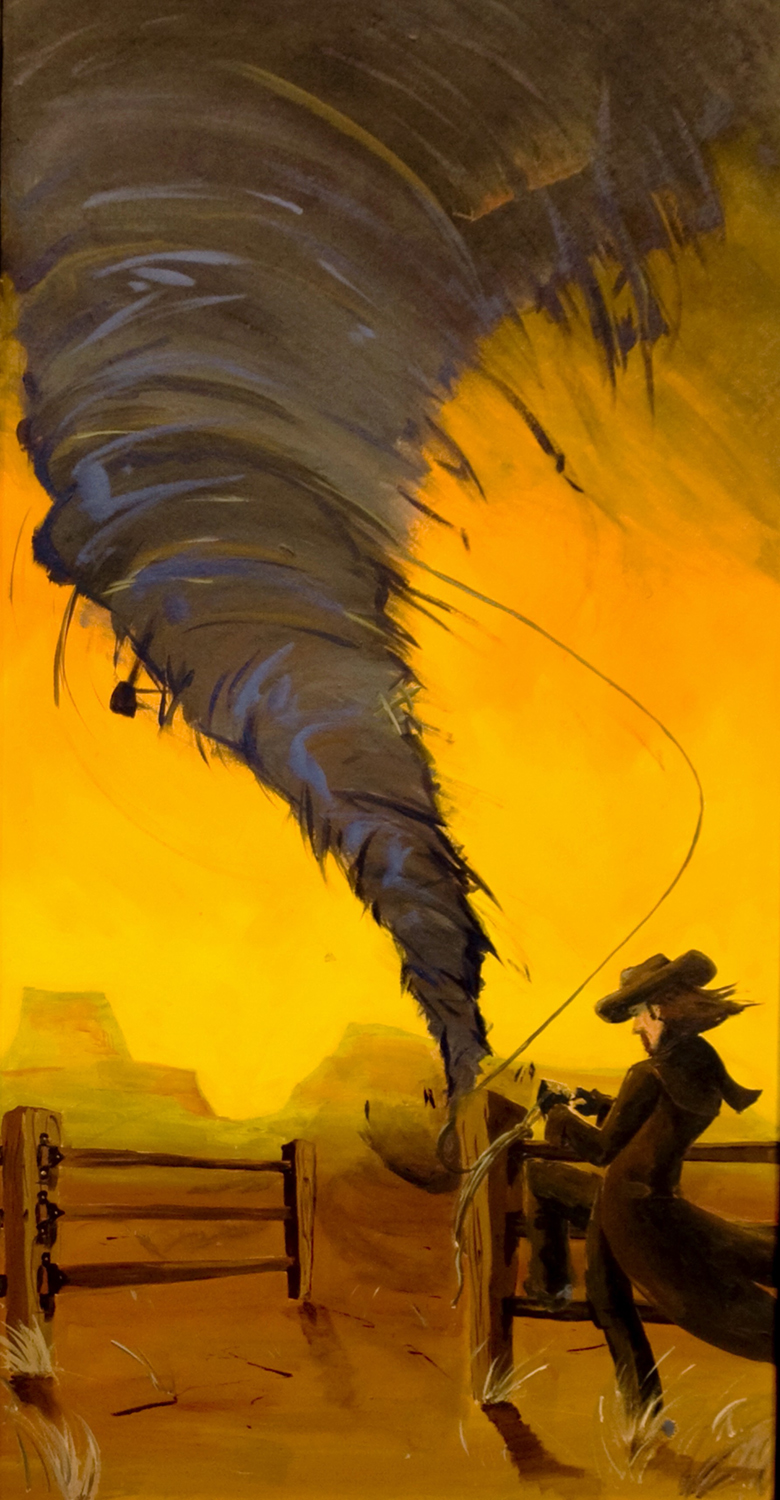
Pecos Bill
Raised by coyotes, and regarded more as a dog than a man, Pecos Bill was always known for being more than a little rough around the edges. Yet he was always welcomed during the summer droughts, when he found the most extraordinary use for his self fashioned lasso. One particularly dry summer the sky grew so angry and purple that a huge cyclone began to descend upon the parched Texan earth. Pecos was the onl:1 man who didn't run in tear; instead he pulled out his longest lasso and circled all 131 ,480,184 feet of it over his head. Finally , as the cyclone was within a foot of the earth, Pecos let his rope fly lassoing the storm around its neck. Although the tempest kicked and bucked harder than any wild bronco Pecos held tight to his rope. He rode that beast across 3 states while squeezing out rain to nourish the thirsty earth.
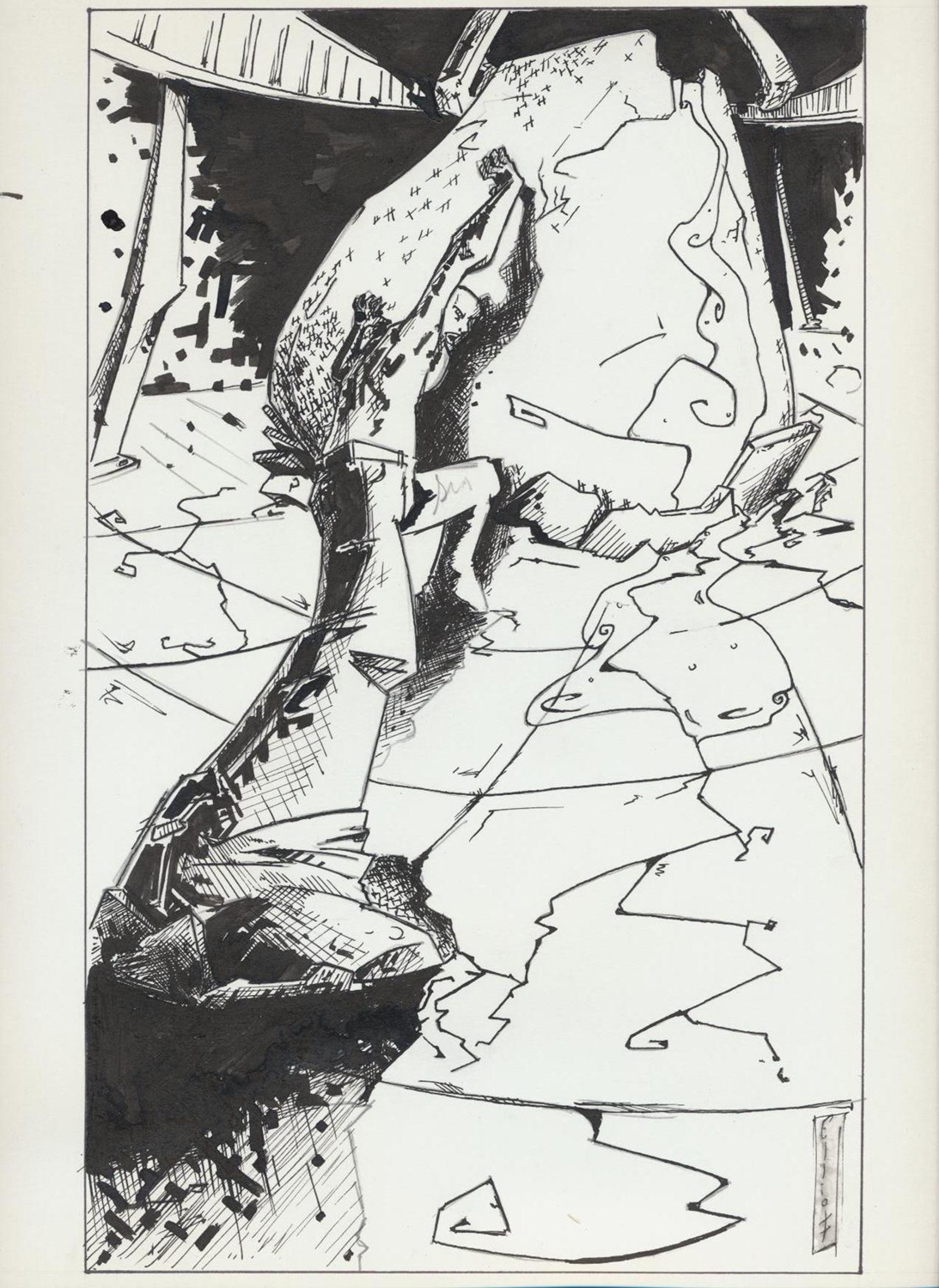
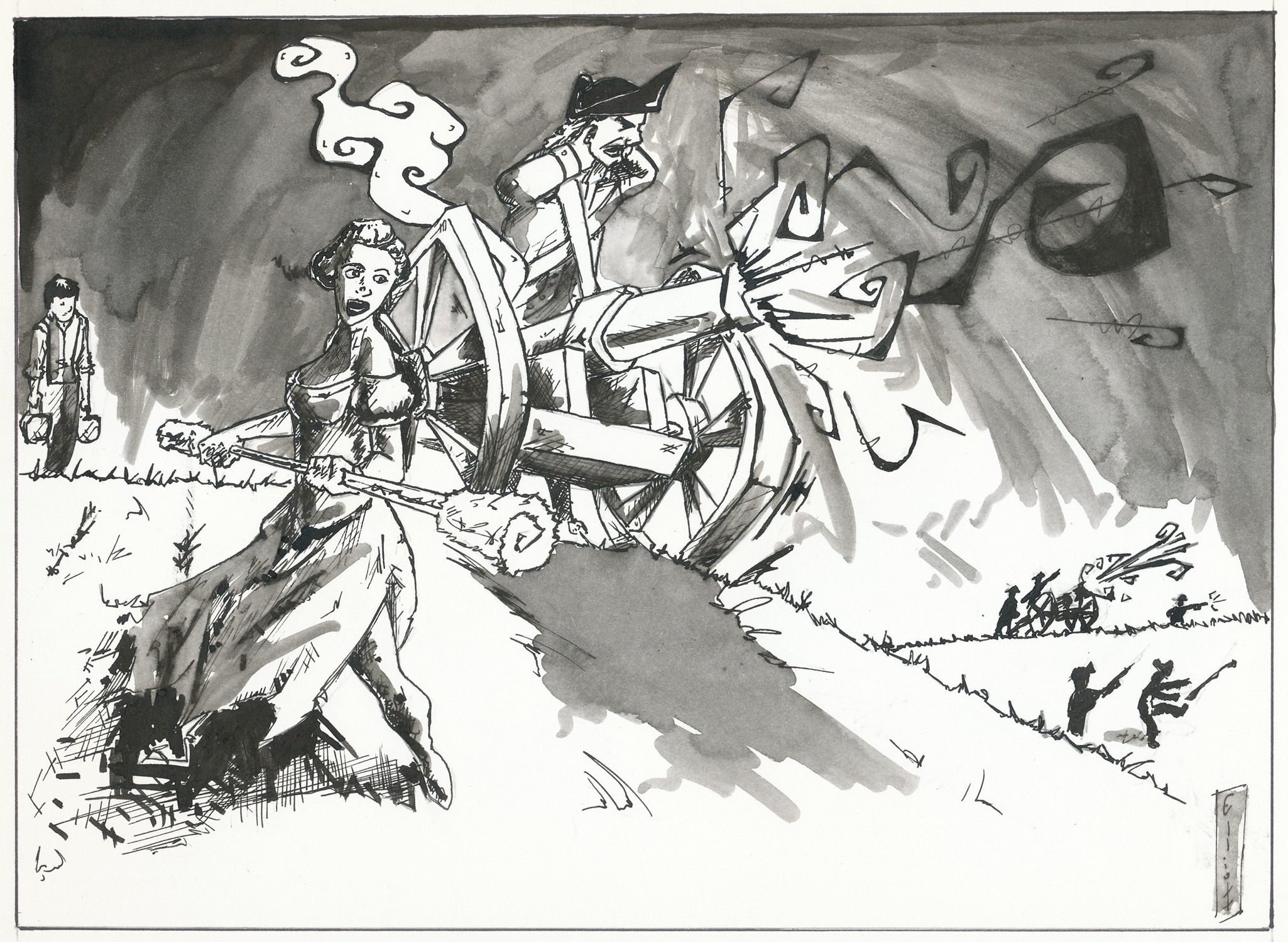
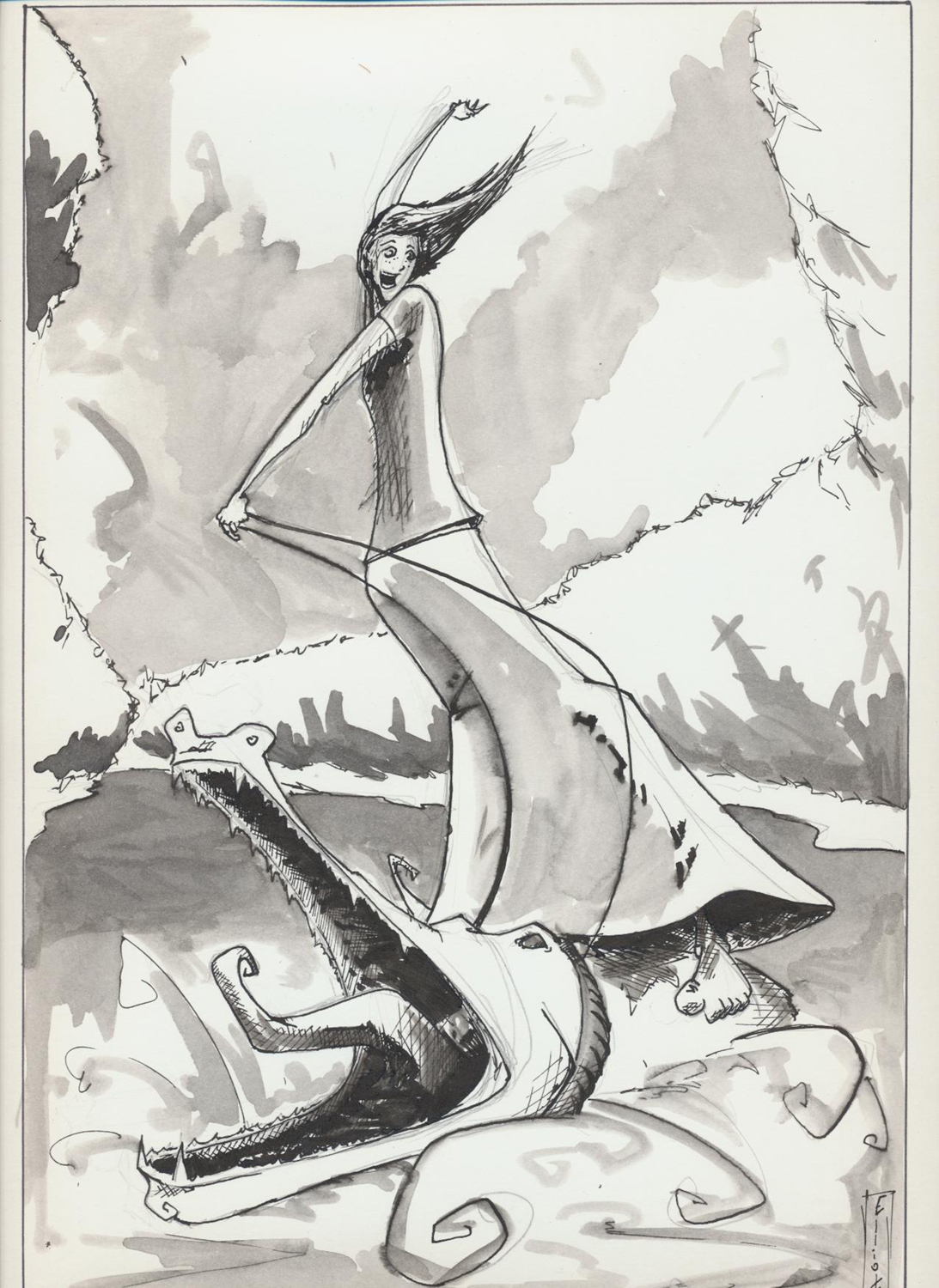
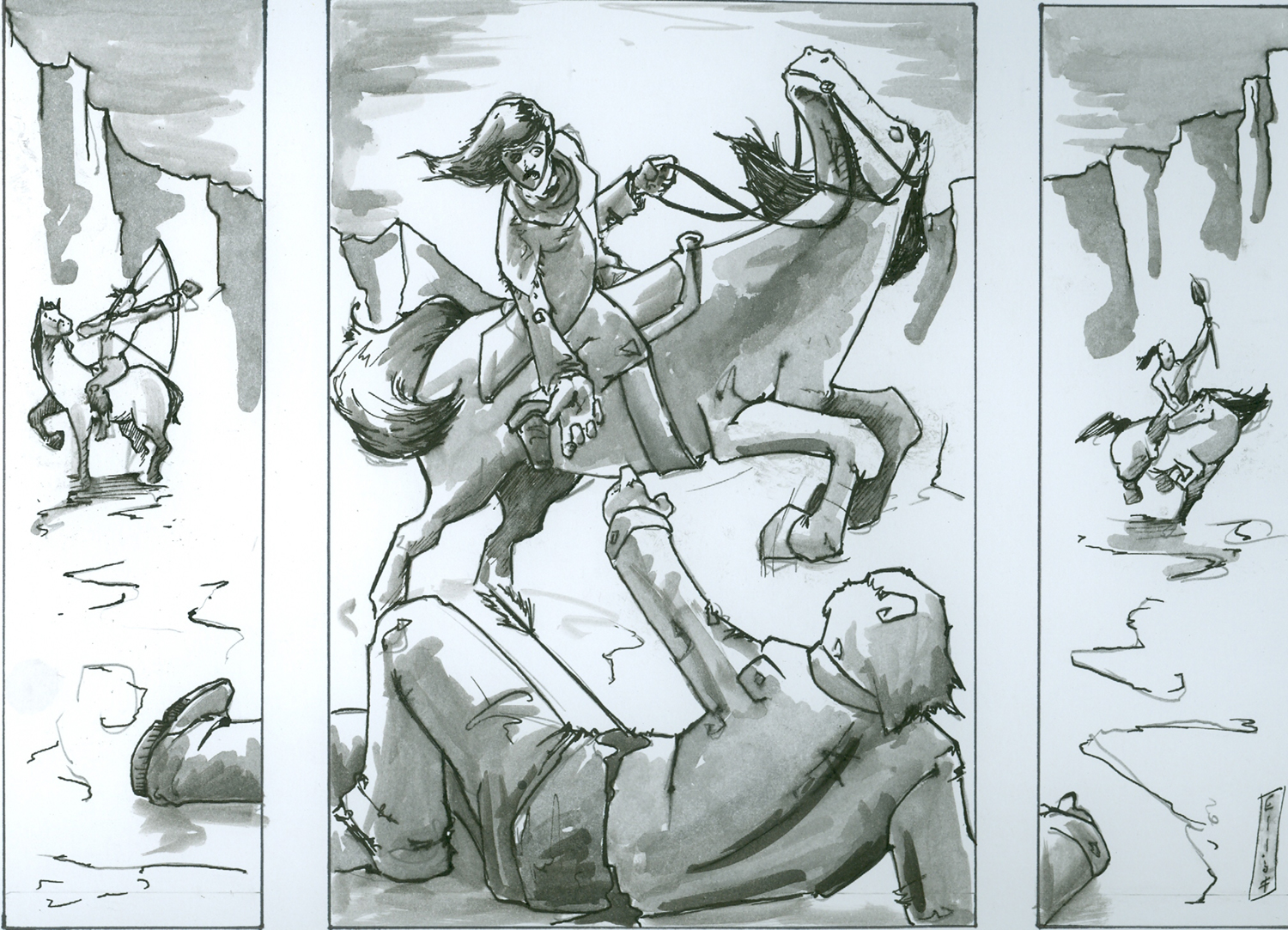
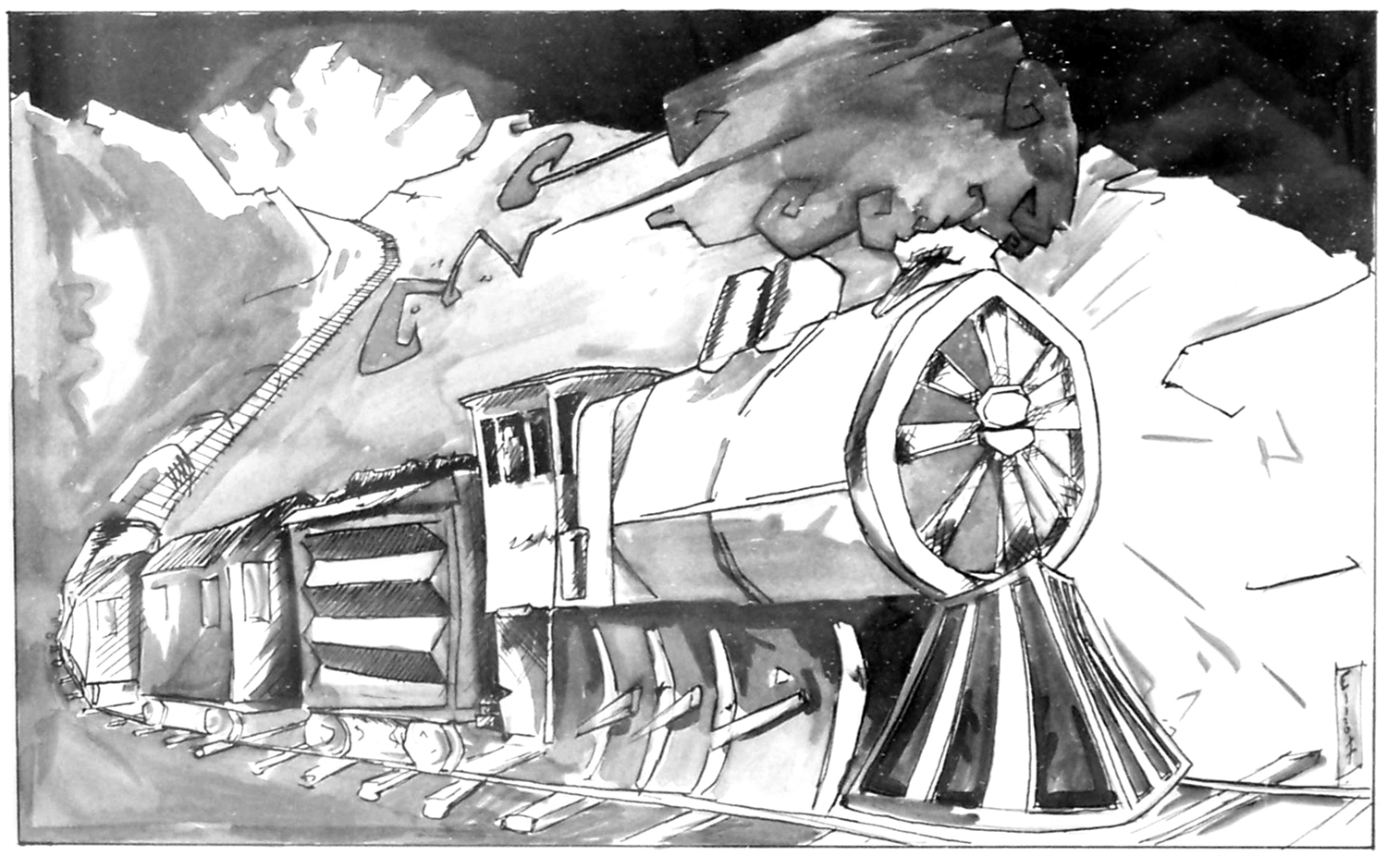
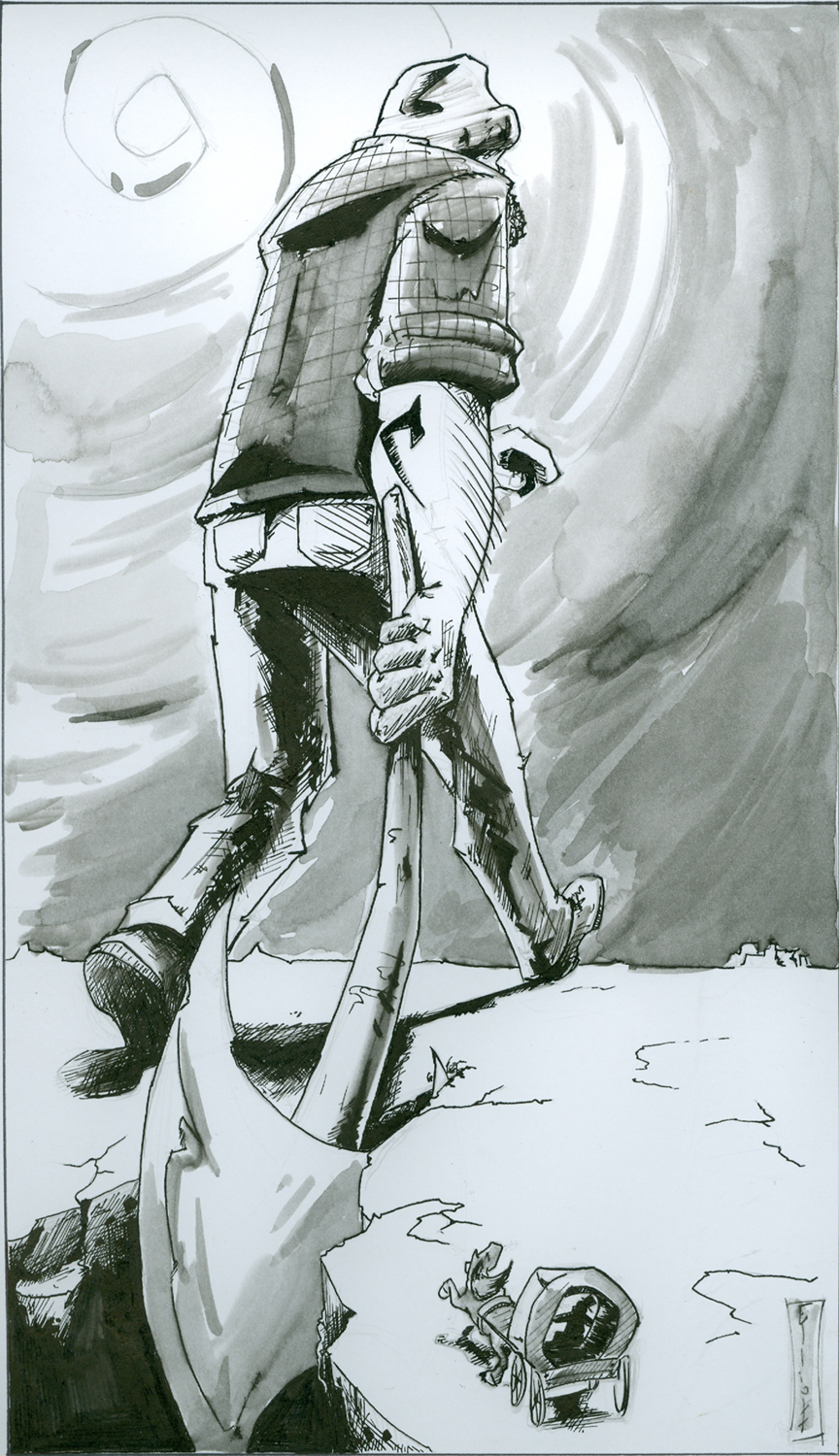
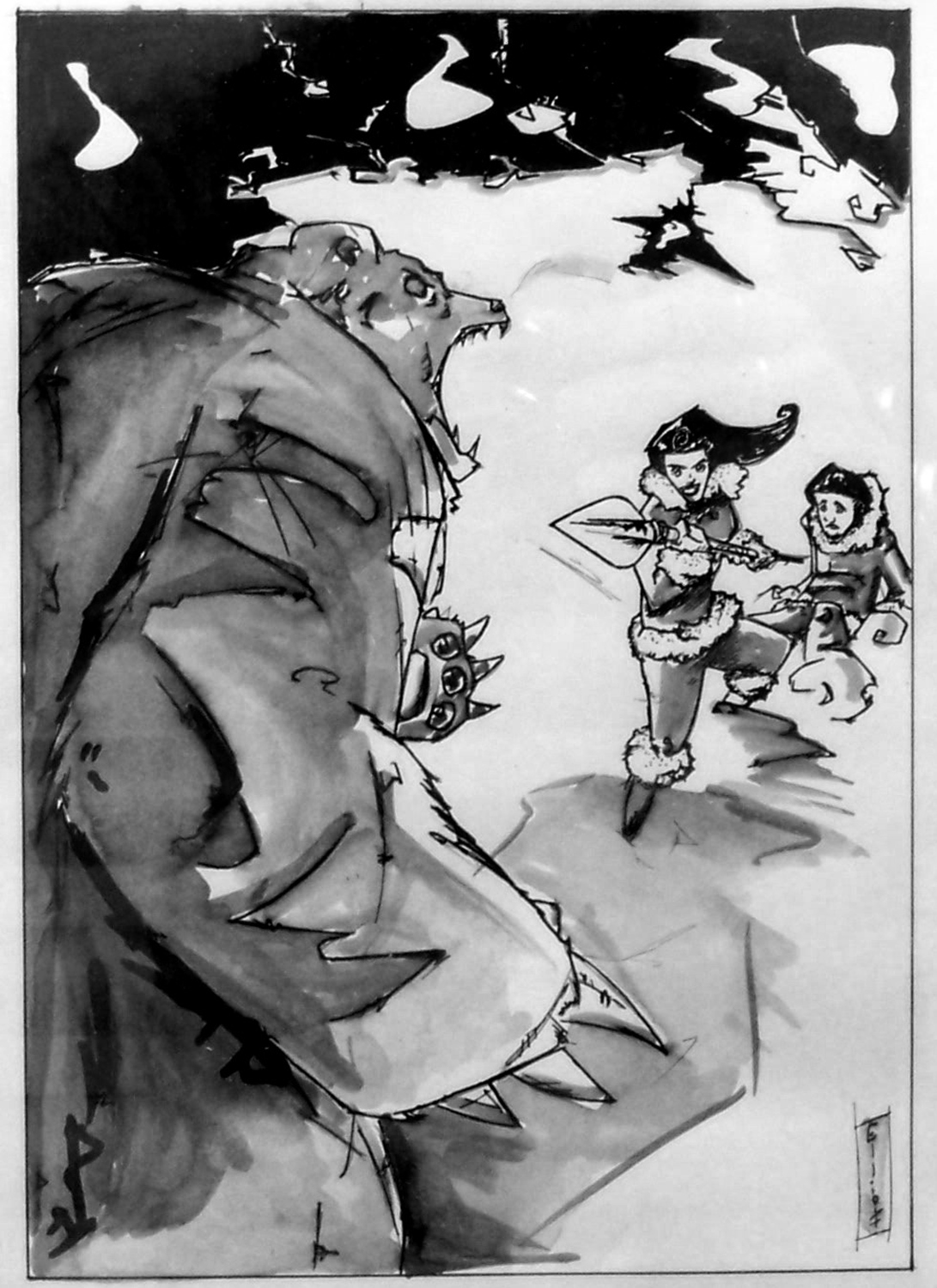
Artist Statement
"Artists should always think of themselves as cosmic instruments for storytelling." -Ted Lange
When I was first accepted into the B.F.A. program, I honestly had no clue what I wanted my thesis to be about. Then one night, as I was watching 3:IO to Yuma with my girlfriend, a light came on, "why not folktales?" Why not do something that not many people remembered, but enjoyed? With this epiphany Retold came into light.
These tall tales are exaggerations of men and women who were able to do amazing feats, some who were fearless, and some who were just abnormally gigantic. The focus of these stories, however, was not just to shock and awe, but to also inspire. These men and women, some who were fictional and some not, who had the courage to tame this land that was unknown to them. Their tales have been passed down, rewritten and illustrated numerous times by many people, each adding their own spin to the story. In keeping that tradition alive, I have chosen certain stories and reimagined them into works that I hope inspire you. Enjoy.





